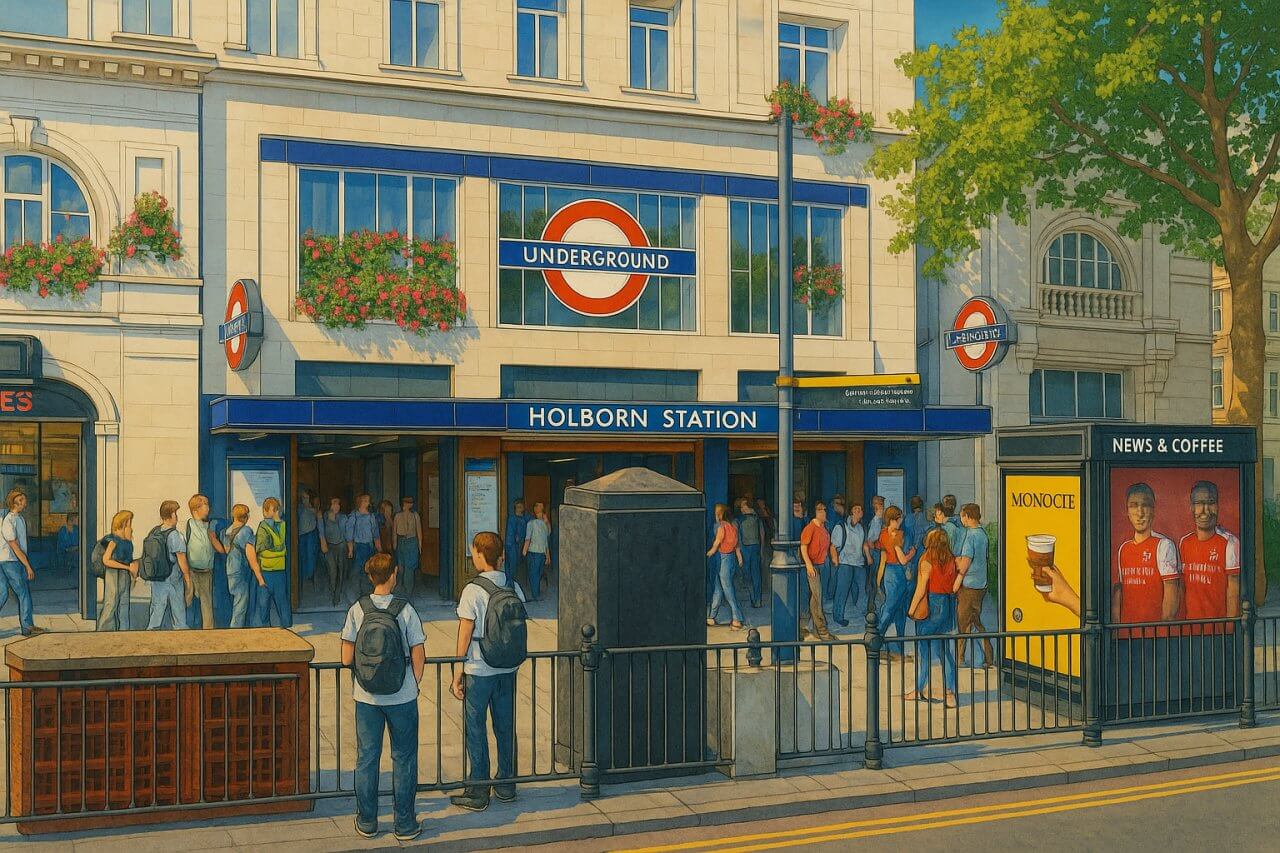
Holborn Station, London
Holborn Station is a vital transport interchange in Central London, serving both the Central Line and Piccadilly Line of the London Underground. Strategically located at the junction of High Holborn and Kingsway, it lies in the Holborn district, just on the edge of the City of Westminster and Camden. This busy underground station provides commuters, tourists, and residents with seamless access to various parts of London.
History and Naming
Holborn Station opened to the public on 15 December 1906 as part of the Great Northern, Piccadilly and Brompton Railway (now the Piccadilly Line). The station became a dual-line stop in 1933 when it was linked to the Central Line, facilitating convenient interchanges between the two services.
The name “Holborn” originates from the district it serves, which in turn derives from the Old English words "hōl" (hollow) and "burna" (stream), referring to the River Fleet that once flowed through the area. The station has always been known as Holborn since its inception, though earlier plans proposed names such as “Kingsway” or “Museum Street.”
Architecture and Station Buildings
The station building was designed by architect Leslie Green and features his trademark oxblood-red glazed terracotta façade. It was constructed using steel framing and incorporates elements of the Arts and Crafts style. Inside, the station has undergone several renovations, including significant upgrades in the 1930s and more recently to improve accessibility and circulation. The entrance is integrated into a larger commercial block, blending old-world charm with modern conveniences.
Proximity to Charing Cross
Holborn Station is located approximately 1.1 miles by road from Charing Cross, one of the key reference points for Central London. This journey typically takes around 7 to 10 minutes by car or bus, depending on traffic conditions.
Rail Services
Holborn Station is a stop on the London Underground Stations network and is served by two lines:
- Piccadilly Line: The station lies between Covent Garden (westbound) and Russell Square (eastbound).
- Central Line: The station lies between Tottenham Court Road (westbound) and Chancery Lane (eastbound).
There are no Elizabeth Line or London Overground services at Holborn Station, but interchanges to other services can be made at nearby hubs such as King’s Cross St. Pancras or Tottenham Court Road.
Journey to Charing Cross Station
Although there is no direct Underground route from Holborn to Charing Cross Station, passengers can complete the journey with a simple interchange. One recommended route is:
- Take the Central Line westbound from Holborn to Oxford Circus.
- Change at Oxford Circus to the Bakerloo Line southbound.
- Continue on the Bakerloo Line to Charing Cross Station.
The total estimated journey time is approximately 10–12 minutes.
As of the latest fare update in 2025, the adult fare for a single journey from Holborn to Charing Cross is:
- £6.70 when paying by cash (paper ticket)
- £2.80 using an Oyster card or contactless payment during off-peak hours
- £3.40 during peak hours with Oyster/contactless
Fun Fact
Holborn Station was once home to an experimental underground travelator, or "moving walkway," designed to test the feasibility of such systems in the London Underground. Though the concept was eventually abandoned at Holborn, the experiment paved the way for their implementation in major stations such as Bank and Waterloo.
Quick Facts
- Opened: 15 December 1906
- Lines Served: Piccadilly Line, Central Line
- Zone: 1
- Location: High Holborn, Central London
- Managed by: London Underground
- Distance to Charing Cross: Approx. 1.1 miles by road
- Travel Time to Charing Cross: Approx. 10–12 minutes via Oxford Circus
- Fares to Charing Cross: £2.80 (off-peak Oyster), £3.40 (peak Oyster), £6.70 (cash)
- Previous and Next Stations (Piccadilly Line): Covent Garden / Russell Square
- Previous and Next Stations (Central Line): Tottenham Court Road / Chancery Lane
- Building Style: Oxblood-red terracotta façade by Leslie Green
- Fun Fact: Site of a now-defunct experimental moving walkway
Holborn Station is  on the Map of London Underground
on the Map of London Underground
 Painting of Holborn Station, London
Painting of Holborn Station, London